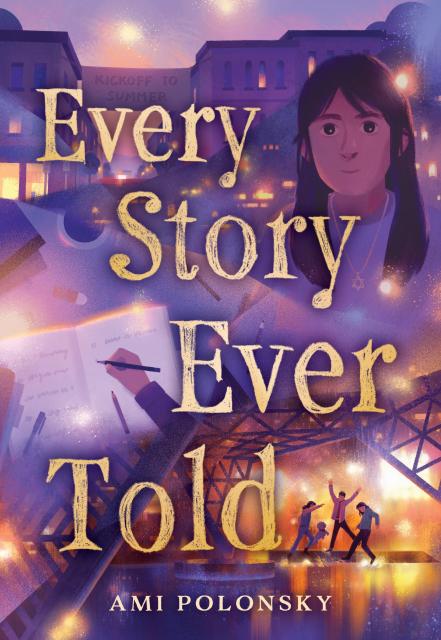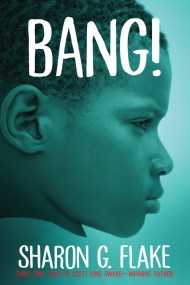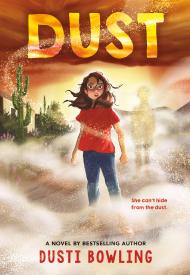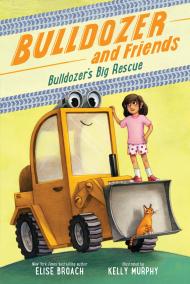Every Story Ever Told
In this life-affirming novel of trauma and recovery, a girl searches for a path forward after being forced to confront the reality of gun violence, for fans of Dusti Bowling and Jasmine Warga.
Stevie Jane Cohen-Kaplan’s sheltered suburban life is shattered by a mass shooting at a festival in her town. In the aftermath, her brain feels broken. She can’t bear to visit her mom, recovering in the hospital under Stevie’s dad’s watchful eye, or to be pent up in her grandparents’ nearby Manhattan apartment.
To escape the apartment and her own thoughts, Stevie starts adventuring around New York City with her best friend, Avi, and a new therapy dog (in training). The trio starts chasing stories—about a neighbor’s life after the Holocaust, Stevie’s grandfathers who died of AIDS long before she was born, and even about her own mom’s activist upbringing. These stories may not bring Stevie all the way back to “normal,” but can they help her find a new version of herself?
Written with compassion and care, Every Story Ever Told places readers at the center of their own story and within a larger human tapestry, as one girl tries to make sense of the unthinkable.
GoodreadsFormats and Prices
Price
$16.99Price
$22.99 CADFormat
Format:
- Hardcover $16.99 $22.99 CAD
- ebook $9.99 $12.99 CAD
- Audiobook Download (Unabridged) $18.99
Also available from:
Book Club Guide
- Every Story Ever Told opens with a countdown clock. What are other instances of time being significant in this story? Why do you think time is used as a motif in the novel?
- After her mom is shot by a random mass shooter, Stevie thinks, “Mom was in the hospital because of me,” (p. 42). What does Stevie do in response to this feeling of guilt? Are there other characters who also feel guilty? Does their guilt make sense?
- How does the shooting affect Stevie’s dad? And how does his behavior make Stevie feel?
- Stevie’s neighbor, Evelyn, suggests that Stevie and Avi wander around New York City while Stevie’s mom is in the hospital. How does experiencing “the sounds” and “the sights,” (p. 54) of New York help Stevie?
- Evelyn tells Stevie about her Star of David necklace that was saved by a brave friend, Dora, when Evelyn’s family was taken to a concentration camp during the Holocaust. What does Evelyn mean when she says Dora did it “for the story” (p. 163)?
- Both Stevie and Evelyn give a lot of thought to their names as they cope with trauma. What is noteworthy about both of their names? In what other ways are their two stories similar?
- Why does Stevie’s mom’s mural depict her and her friends aiming slingshots? And later, why does Stevie feel that everyone she loves, inside her “crowded heart” (p. 229), is holding loaded slingshots? What do you think they are aiming at?
- Avi is the person Stevie tells everything to. So why is it so hard for her to talk to him after the shooting?
- At The Center, Jonas tells Stevie, “The feeling of surviving with AIDS could, at times, feel just as overwhelming as the diagnosis” (p. 129). What do you think Jonas means by that? Can the same truth be applied to other survivors in this story?
- What do you think the “fluorescent-yellow haze” (p. 83) that follows Stevie around represents? What tool does Stevie use to inevitably confront the haze?
- The book ends with a poem by Stevie. How does poetry bring Stevie closer to her mom and deceased grandfather? How does the final poem relate to the title of the book?
- At the beginning of the novel, Stevie’s dad is adamantly against adopting a dog, so how does he react when he learns about Stevie’s emotional support dog, Raisin?
- If you’ve read World Made of Glass—which is about Stevie’s mom—what is similar about the two stories? How are they different?
- In what ways do the characters in this book persevere despite senseless violence? What lessons can you take from this book into your own life?
By clicking ‘Sign Up,’ I acknowledge that I have read and agree to Hachette Book Group’s Privacy Policy and Terms of Use













